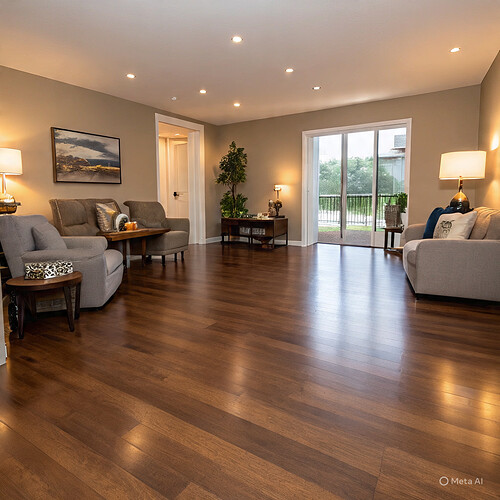When people think about renovating their homes, they usually picture new kitchens, modern bathrooms, or a fresh coat of paint on the walls. Flooring often comes last on the list, yet it has one of the most dramatic effects on how a space looks and feels. The type of flooring you choose not only sets the tone for the room but also affects durability, maintenance, and comfort. It is one of those details that people tend to overlook until they step into a beautifully renovated home and realize that the floor quietly ties everything together.
One reason flooring makes such a difference is that it covers such a large area. A new set of cabinets might upgrade a kitchen, but a new floor can transform the entire house. Hardwood remains a classic choice because of its timeless appeal and long-lasting quality. Engineered wood offers a more affordable option that looks almost identical to solid wood. For those who want something budget-friendly and versatile, vinyl and laminate have come a long way in both design and durability. They can mimic the look of stone, tile, or wood while being easy to install and maintain.
A quirky but useful trick many designers swear by is to experiment with patterned floors in small spaces. Bathrooms, mudrooms, or even laundry areas can look incredibly stylish with bold tiles or painted floorboards. These areas are perfect testing grounds because the risk feels lower than committing to a bold pattern in a living room. Surprisingly, these playful design choices often become the most talked-about feature of a home.
Practicality matters just as much as style. High-traffic areas like entryways and kitchens need durable flooring that can handle wear and tear. Bedrooms benefit from softer materials like carpet, which add warmth and comfort. For families with pets or children, scratch-resistant and water-resistant flooring is often worth the extra investment. Even the underlayment beneath the floor should not be ignored, as it can improve insulation and reduce noise between rooms.
Budget plays a huge role in flooring decisions, but the good news is that there are quality options at every price point. Homeowners can mix materials throughout the house to balance costs. For example, hardwood in the living room can be paired with laminate in bedrooms or vinyl in utility areas. What matters most is that the choices reflect both lifestyle and long-term needs.
Flooring also affects resale value. Buyers notice fresh, modern floors immediately, and real estate agents often highlight them in listings. A home with worn carpets or outdated tiles feels less appealing, even if everything else is updated. By contrast, a well-chosen floor makes the whole property look newer and better cared for.
Renovating a home is always about balance. Big-ticket items like kitchens and bathrooms will always be important, but floors deserve just as much attention. They influence how people experience a space every day, and they can make or break the overall design. A beautiful, practical floor is more than just something to walk on. It is the foundation of style, comfort, and value, and it should never be treated as an afterthought.
